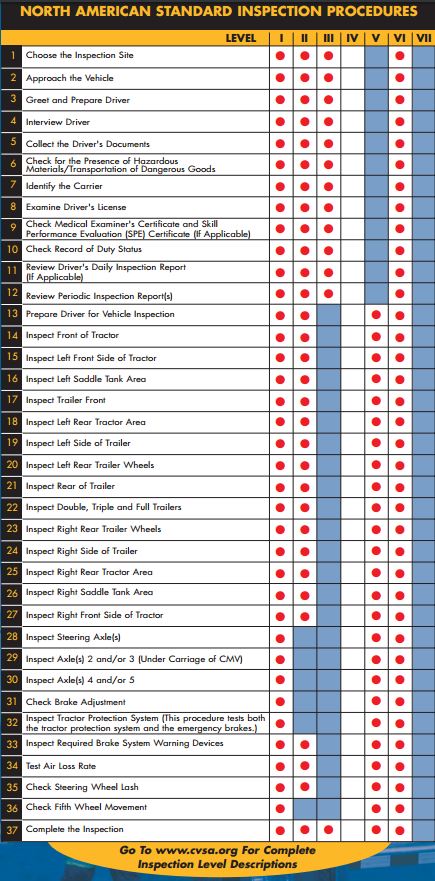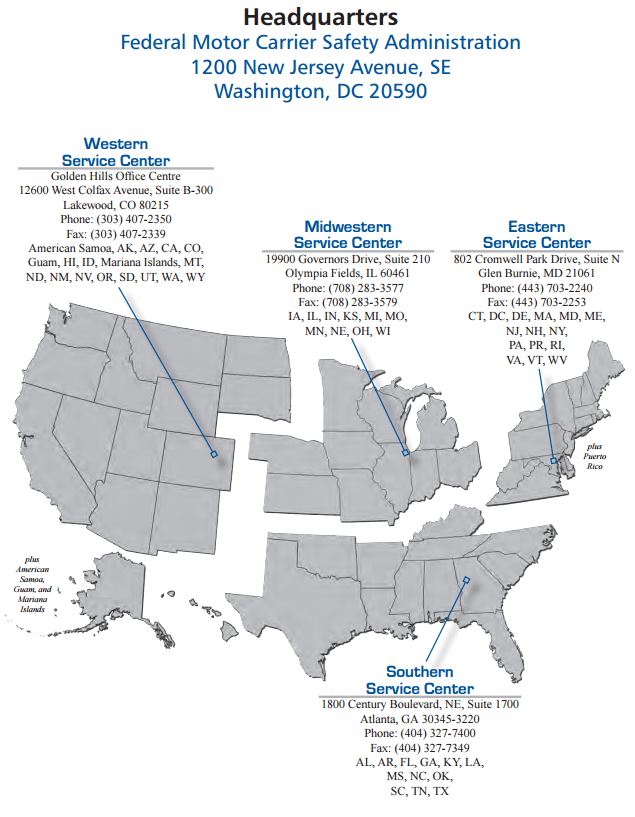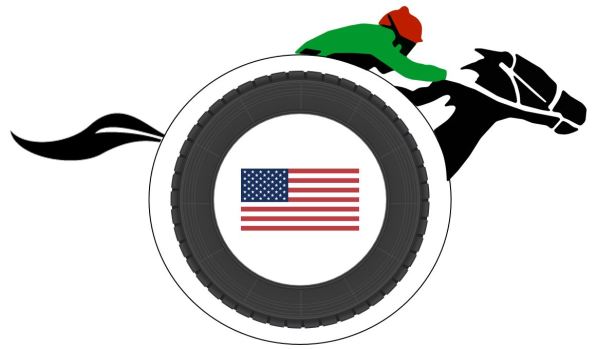There are many rules and regulations for commercial tires in the U.S. that are implemented and enforced to ensure the safety of all motorists on the nation’s highways. Both commercial tire dealers and fleet owners are required to stay educated and informed on these regulations as they most often are updated on an annual basis.
The Code of Federal Regulations (CFR) 393.75 describes eight specific parts involving commercial truck tires and it stated in full below.
(a) No motor vehicle shall be operated on any tire that—
(1) Has body ply or belt material exposed through the tread or sidewall,
(2) Has any tread or sidewall separation,
(3) Is flat or has an audible leak, or
(4) Has a cut to the extent that the ply or belt material is exposed.
(b) Any tire on the front wheels of a bus, truck, or truck tractor shall have a tread groove pattern depth of at least 4⁄32of an inch when measured at any point on a major tread groove. The measurements shall not be made where tie bars, humps, or fillets are located.
(c) Except as provided in paragraph (b) of this section, tires shall have a tread groove pattern depth of at least 2⁄32 of an inch when measured in a major tread groove. The measurement shall not be made where tie bars, humps or fillets are located.
(d) No bus shall be operated with regrooved, recapped or retreaded tires on the front wheels.
(e) A regrooved tire with a load-carrying capacity equal to or greater than 2,232 kg (4,920 pounds) shall not be used on the front wheels of any truck or truck tractor.
(f) No motor vehicle may be operated with speed-restricted tires labeled with a maximum speed of 55 mph or less in accordance with S6.5(e) of FMVSS No. 119 at speeds that exceed the rated limit of the tire.
(g) Tire loading restrictions (except on manufactured homes). No motor vehicle (except manufactured homes, which are governed by paragraph (h) of this section) shall be operated with tires that carry a weight greater than that marked on the sidewall of the tire or, in the absence of such a marking, a weight greater than that specified for the tires in any of the publications of any of the organizations listed in Federal Motor Vehicle Safety Standard No. 119 (49 CFR 571.119, S5.1(b)) unless:
(1) The vehicle is being operated under the terms of a special permit issued by the State; and
(2) The vehicle is being operated at a reduced speed to compensate for the tire loading in excess of the manufacturer’s rated capacity for the tire. In no case shall the speed exceed 80 km/hr (50 mph).
(h)(1) Tire loading restrictions for manufactured homes built before January 1, 2002. Manufactured homes that are labeled pursuant to 24 CFR 3282.362(c)(2)(i) before January 1, 2002, must not be transported on tires that are loaded more than 18 percent over the load rating marked on the sidewall of the tire or, in the absence of such a marking, more than 18 percent over the load rating specified in any of the publications of any of the organizations listed in FMVSS No. 119 (49 CFR 571.119, S5.1(b)). Manufactured homes labeled before January 1, 2002, transported on tires overloaded by 9 percent or more must not be operated at speeds exceeding 80 km/hr (50 mph).
(2) Tire loading restrictions for manufactured homes built on or after January 1, 2002. Manufactured homes that are labeled pursuant to 24 CFR 3282.362(c)(2)(i) on or after January 1, 2002, must not be transported on tires loaded beyond the load rating marked on the sidewall of the tire or, in the absence of such a marking, the load rating specified in any of the publications of any of the organizations listed in FMVSS No. 119 (49 CFR 571.119, S5.1(b)).
(i) Tire inflation pressure. (1) No motor vehicle shall be operated on a tire which has a cold inflation pressure less than that specified for the load being carried.
(2) If the inflation pressure of the tire has been increased by heat because of the recent operation of the vehicle, the cold inflation pressure shall be estimated by subtracting the inflation buildup factor shown in Table 1 from the measured inflation pressure.

Source: U.S. Government Publishing Office
The Commercial Vehicle Safety Alliance (CVSA) is an international not-for-profit organization comprised of local, state, provincial, territorial and federal motor carrier safety officials and industry representatives from the United States, Canada, and Mexico.
Approximately 4 million commercial motor vehicle inspections are conducted every year throughout North America to ensure the large trucks and buses driving on our roadways are operating safely. Specially trained inspectors in each state, jurisdiction, territory and province inspect commercial motor vehicles based on inspection procedures and criteria created by CVSA, known as the North American Standard Inspection Program.
There are seven levels of inspections ranging from the most comprehensive Level I Inspection, which evaluates both the driver and vehicle, to inspection levels with a more specific area of focus, such as the Level VI Inspection for hazardous materials or dangerous goods.
Roadside inspections are conducted by highly-qualified, specially-trained and certified state, provincial, territorial, and federal law enforcement personnel.
The North American Standard Inspection Program is NOT intended or designed to be a periodic inspection program or a preventative maintenance program for carriers and drivers. However, it does provide a snapshot of CMV maintenance, and determines the effectiveness of a company or driver’s CMV maintenance and safety management program. The data collected helps state, provincial, territorial, and federal governments in the U.S., Canada, and Mexico determine which transportation companies will be selected for review.

Source: Commercial Vehicle Safety Alliance
EPA’s SmartWay program helps companies advance supply chain sustainability by measuring, benchmarking, and freight transportation efficiency.
Launched in 2004, this voluntary public-private program:
- provides a comprehensive and well-recognized system for tracking, documenting and sharing information about fuel use and freight emissions across supply chains
- helps companies identify and select more efficient freight carriers, transport modes, equipment, and operational strategies to improve supply chain sustainability and lower costs from goods movement
- supports global energy security and offsets environmental risk for companies and countries
- reduces freight transportation-related climate change and air pollutant emissions by accelerating the use of advanced fuel-saving technologies
- is supported by major transportation industry associations, environmental groups, state and local governments, international agencies, and the corporate community
SmartWay publishes a verified list of new tires and retreads that meet certain criteria that will ultimately cut down on fuel costs and harmful NOx emissions. The EPA has demonstrated that certain low rolling resistance (LRR) tires and retread technologies can reduce both costs and emissions for long-haul class 8 tractor-trailers by 3% or more.
Below is the SmartWay List for Low Rolling Resistance (LRR) of new and retread tire technologies published in December, 2016:
Source: United States Environmental Protection Agency



